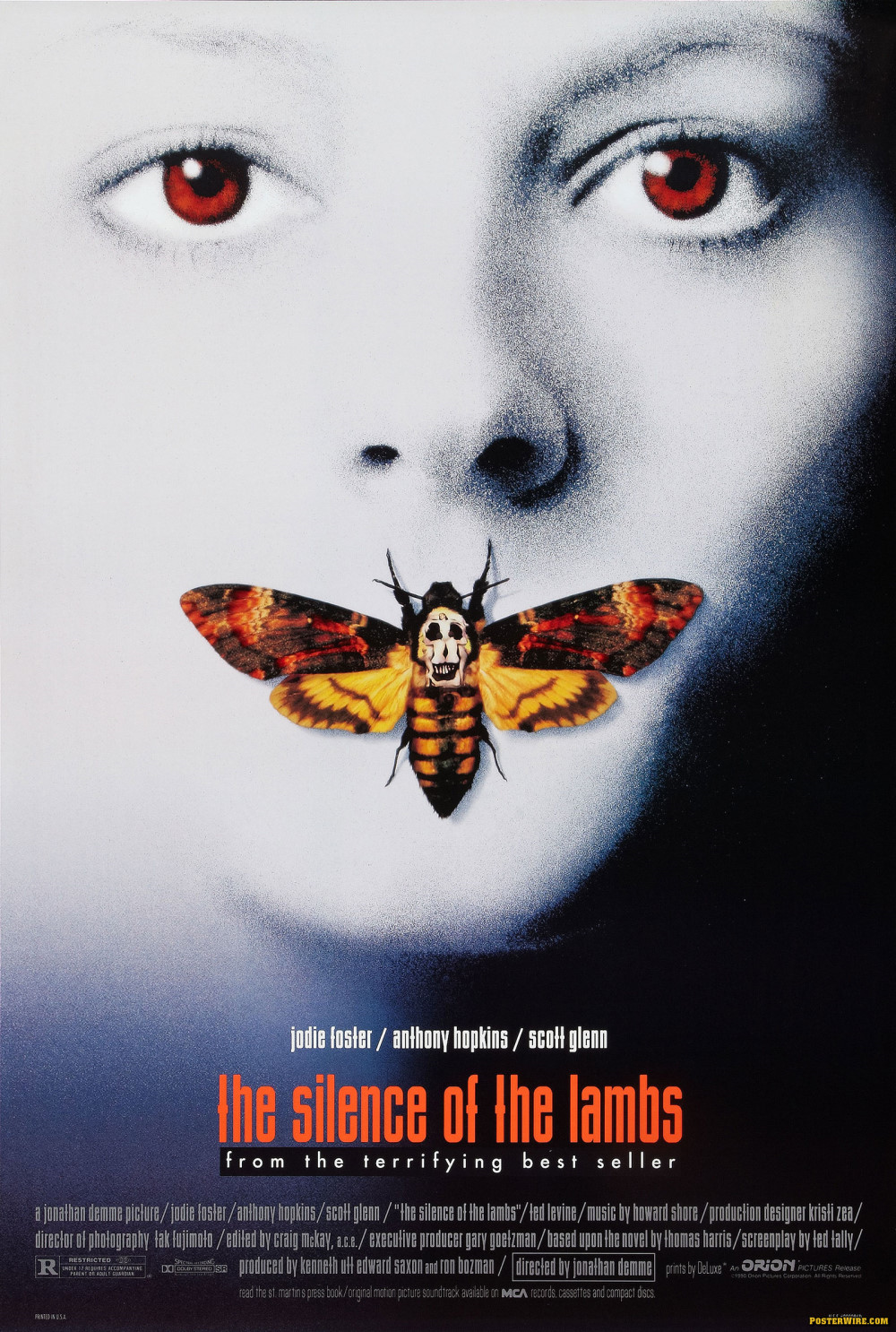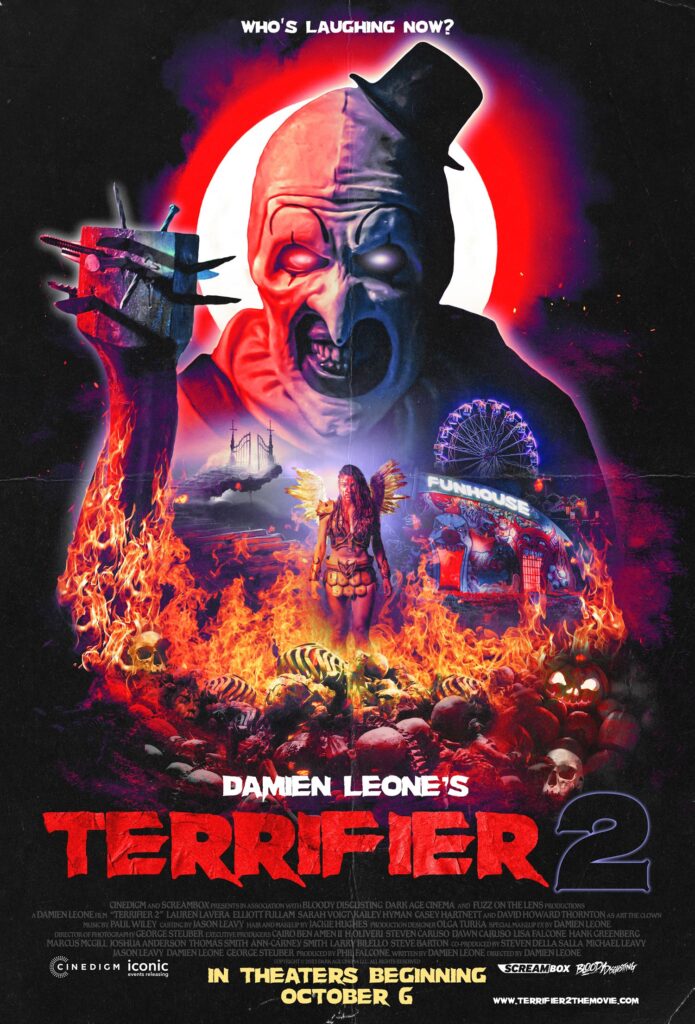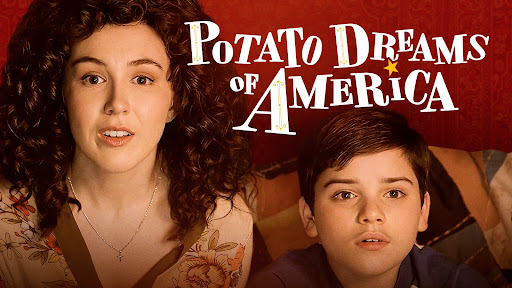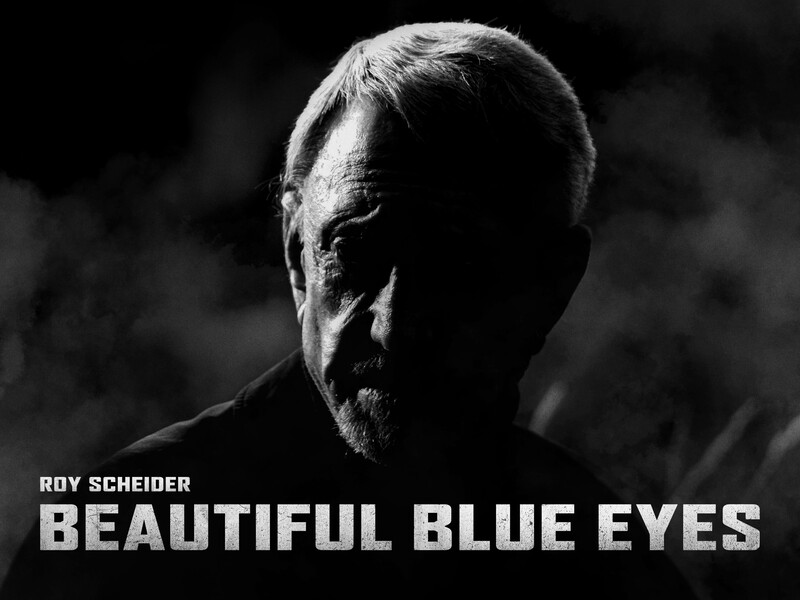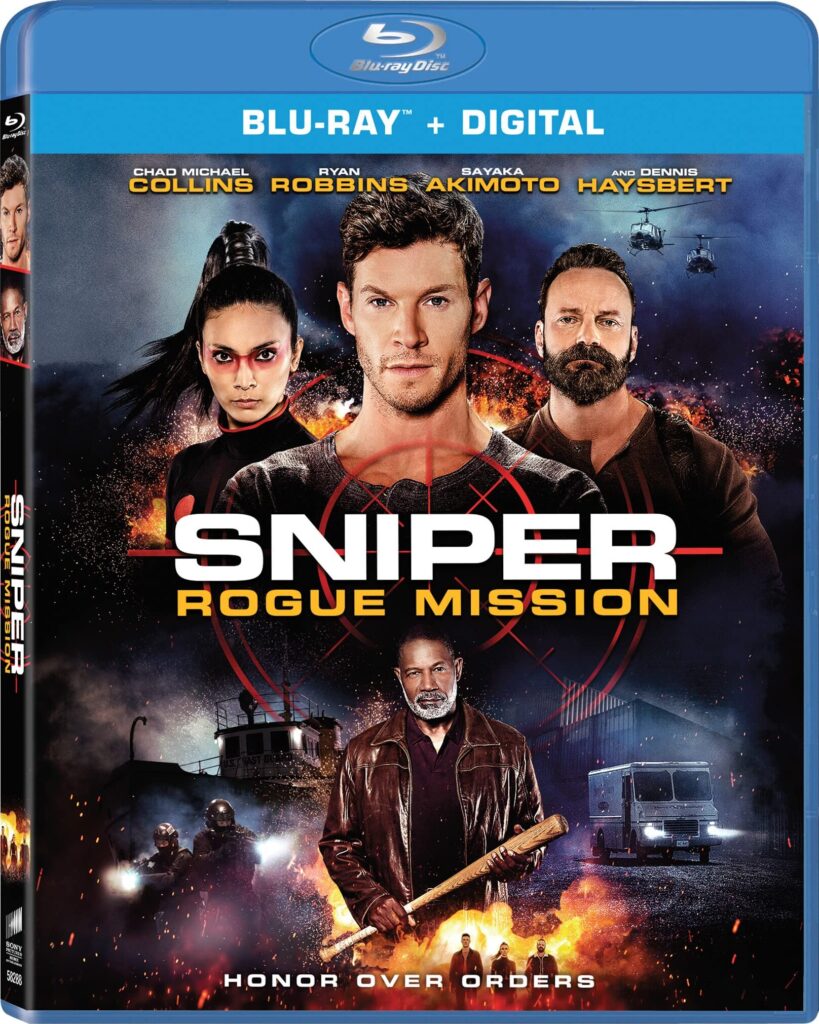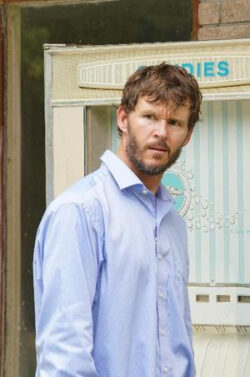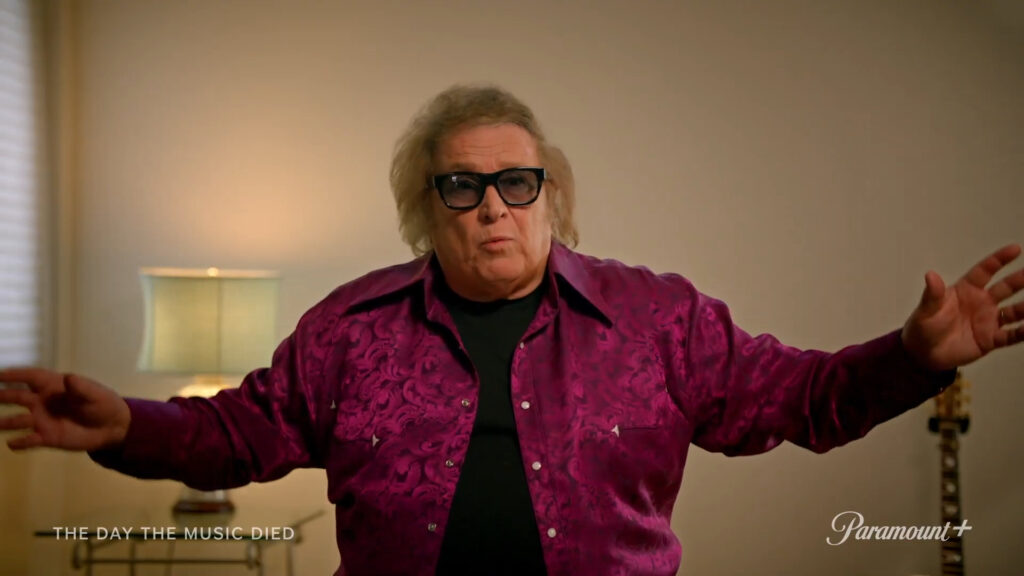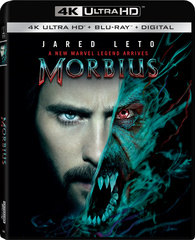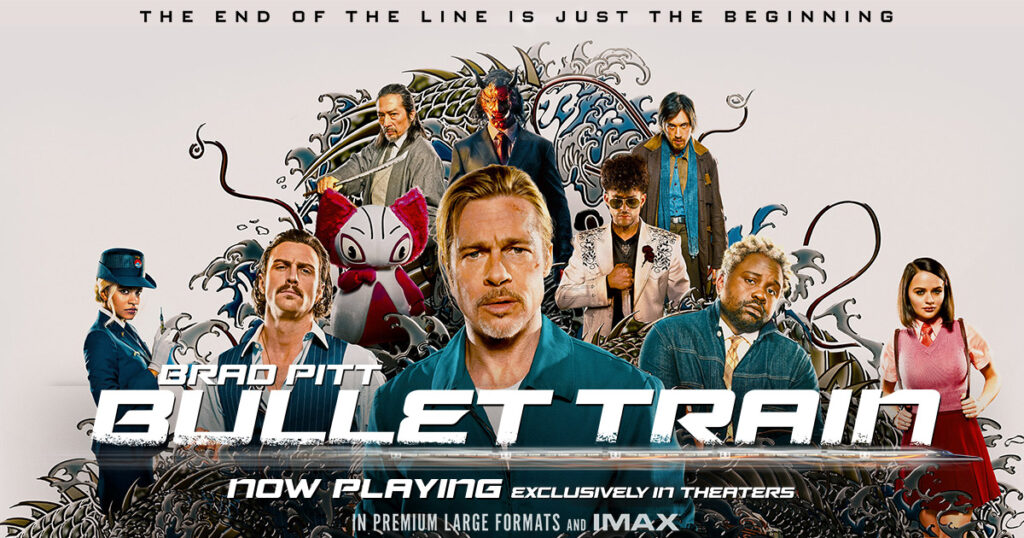If you enjoyed Damien Leone’s original “Terrifier” – then you’re in luck! “Terrifier 2” is the type of sequel where it feels like the director knows exactly what worked and didn’t work within their original film, and decides to double down on all the best parts. While “Terrifier 2” certainly has its fair share of bad performances and feels about ten minute over-long, it feels like an actual improvement over the first film in so many different ways. For starters, the original “Terrifier” is a perfectly enjoyable horror flick that is (rightfully, in my opinion) criticized for being completely light on plot and too reliant on its gnarly kills. Within the first twenty minutes of “Terrifier 2,” it’s apparent that Leone heard the criticisms and delivers a genuinely engaging protagonist within Sienna (Lauren LaVera) with a moderately compelling, emotional arc at her core. This won’t necessarily win any Oscars, but it’s nice to actually care about the characters this time around!
The film opens nearly exactly where its predecessor left off, with Art the Clown (played by the incredibly committed David Howard Thornton) terrorizing the coroner in a morgue. He soon sets off on a new quest for terrorizing more victims on Halloween, as Sienna and her brother (Elliot Fullam) are caught in the middle of all the carnage. The first thirty minutes are spent almost entirely setting up all the various supporting characters surrounded by the two leads, and the rest of the 138 minutes are a blood-bath that makes the first film seem tame in comparison. “Terrifier 2” is an acquired taste that still won’t satisfy all horror fans as it leans even further into torture-porn category than the original did, but you have to admire Leone’s commitment to furthering both his narrative and the extremes he can go-to with the kills Art the Clown can pull-off.
Another vast improvement here is the visual style and production design on display. The original “Terrifier” looked fine for a film of its budget, but one of the most striking things to me as this one began is that the cinematography is genuinely pretty impressive from the get-go. This is all due in-credit to DP Geroge Steuber, who also shot the first film. This advancement in style and change of pace within a more sporadic, popping production design and sets make for the horror to be all the more creative and creepy. Specifically, there’s a dream sequence near the beginning of the film where Art the Clown appears in Sienna’s dreams that is really impressive to watch and one of the more creative horror sequences that I’ve seen this year.
The original film was completely reliant on Art the Clown as a character and wasn’t focused on delivering much else, and it’s understandable as David Howard Thornton is absolutely magnetic and terrifying (no pun intended) in the role. But it is a refreshing change of pace to see him go against Sienna in this, who makes for a more than worthy adversary for Art. Lauren LaVera completely owns this role, and I could see her becoming an iconic final girl for the midnight-horror movie crowd as this is destined to become something of a cult-classic. The final set-piece that pits the two of them together made me desperately wish I saw this with a crowd!
While “Terrifier 2” is far from the best horror movie I’ve seen this year, it’s easily the grossest and gnarliest – and I’m not easily squeamish. This type of horror usually isn’t my bag, but I have to admire its pure lunacy and commitment to grossing you out at every turn. It’s vastly entertaining, with a true vision behind the camera – and it makes me so happy to be a horror fan nowadays, being able to witness the renaissance we’re currently going through; creatives are truly expressing themselves in wild ways, and Damien Leone is no exception to this as he delivers an absolutely bonkers sequel that improves on the original in just about every way imaginable. And without spoiling it, make sure to watch throughout the credits to see a peak at how he plans to expand the “Terrifier” mythology even further!
